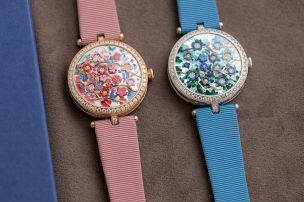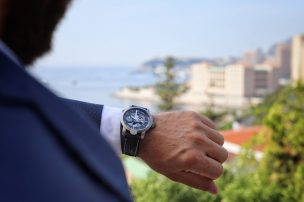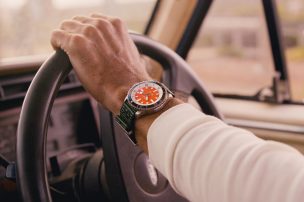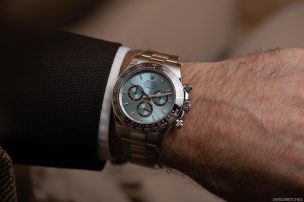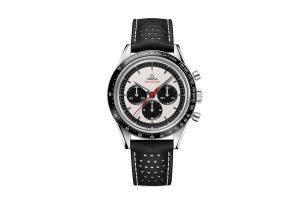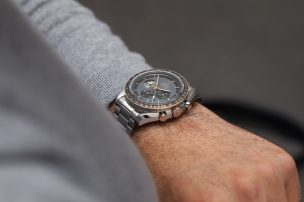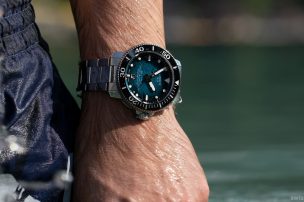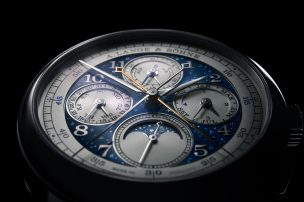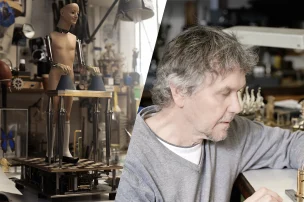
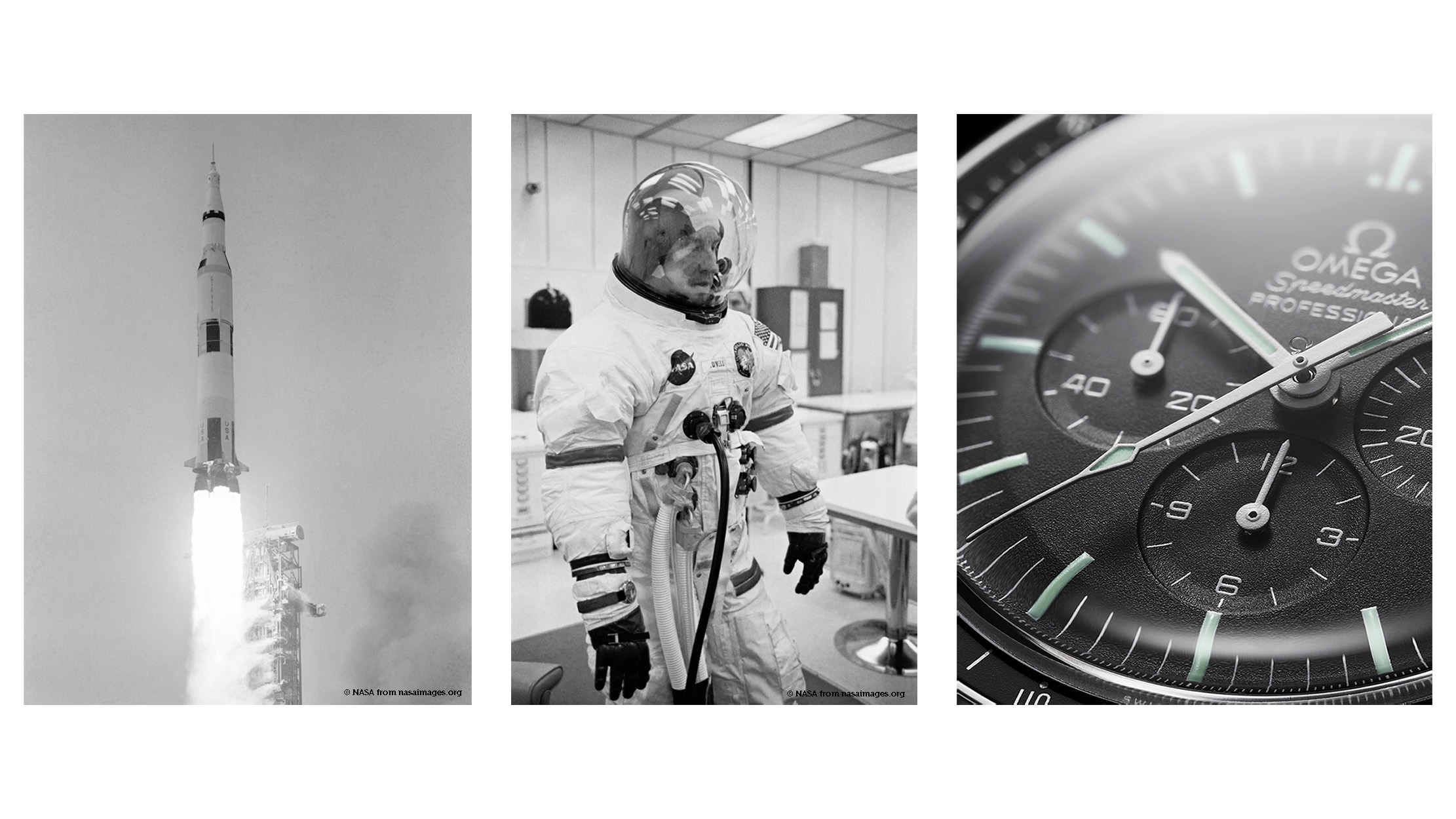
50 Years – Apollo 13, OMEGA And The Moon
In light of the release of the OMEGA Speedmaster “Silver Snoopy Award” 50th Anniversary, it is well worth reliving the story of the tensest space missions in history, in which OMEGA’s Speedmaster proved instrumental in providing safety for NASA’s Apollo 13 crew.
Destined for the moon
It was April 11, 1970, when an unprecendented catastrophe struck. The Saturn V rocket had successfully launched from the Kennedy Space Centre in Florida to transport the astronauts to the Moon. The Apollo 13 mission’s crew had spent over 1,000 hours preparing for this moment. Time would tell if that was long enough.
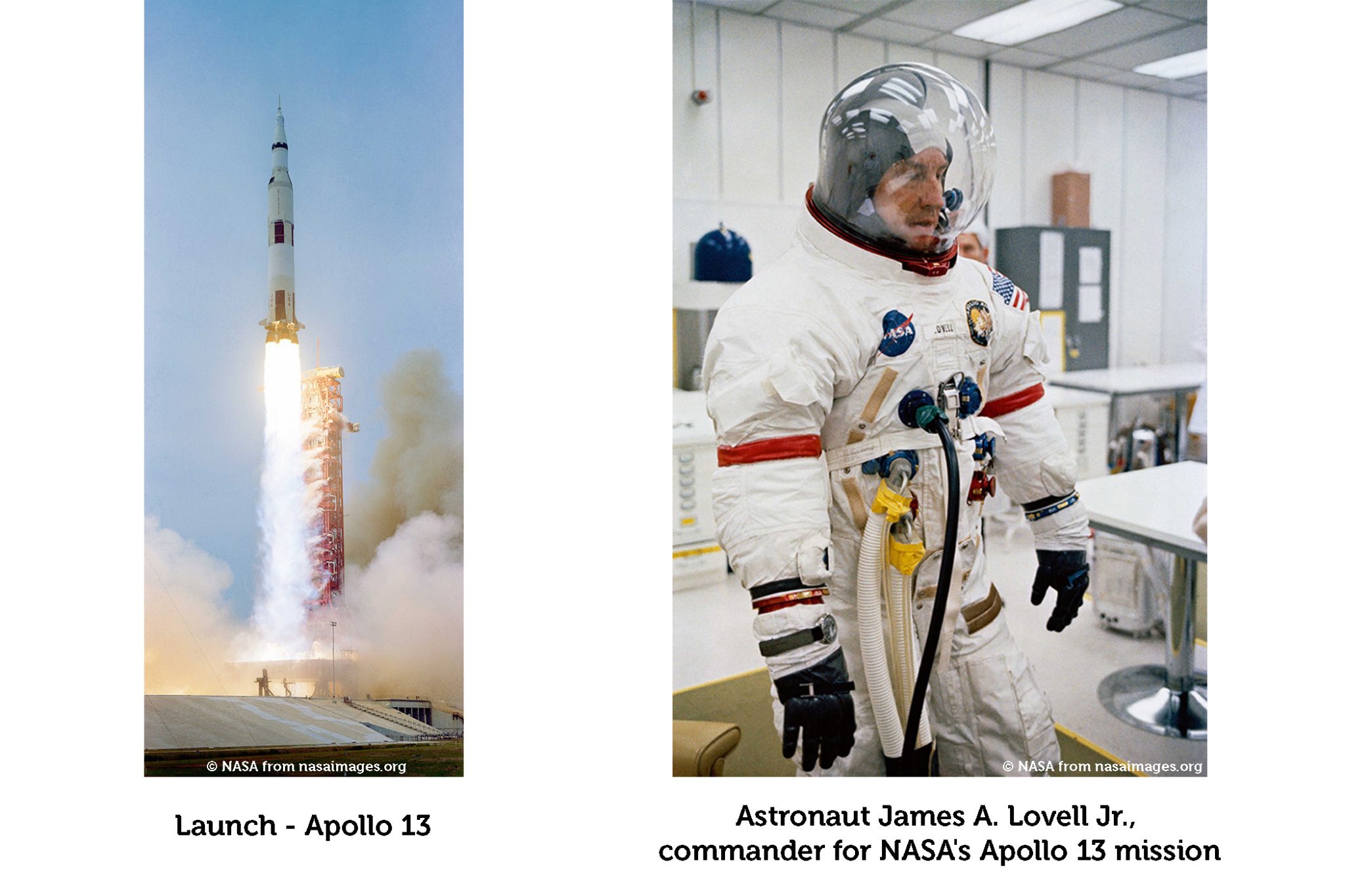
Almost 55 hours, 46 minutes into its journey, the Apollo 13 spacecraft was 330,000 km from Earth. Crew member Jack Swigert had switched its oxygen fans on and then off. Minutes later, at 55:54:53 into the flight, there was a ‘pretty large bang’. 26 seconds later, Swigert promptly reported back to Earth: ‘Okay, Houston, we’ve had a problem here’. Shortly after, Commander Jim Lovell noticed that ‘a gas of some sort’ was leaking out into space. An oxygen tank had exploded. The mission would have to be aborted.
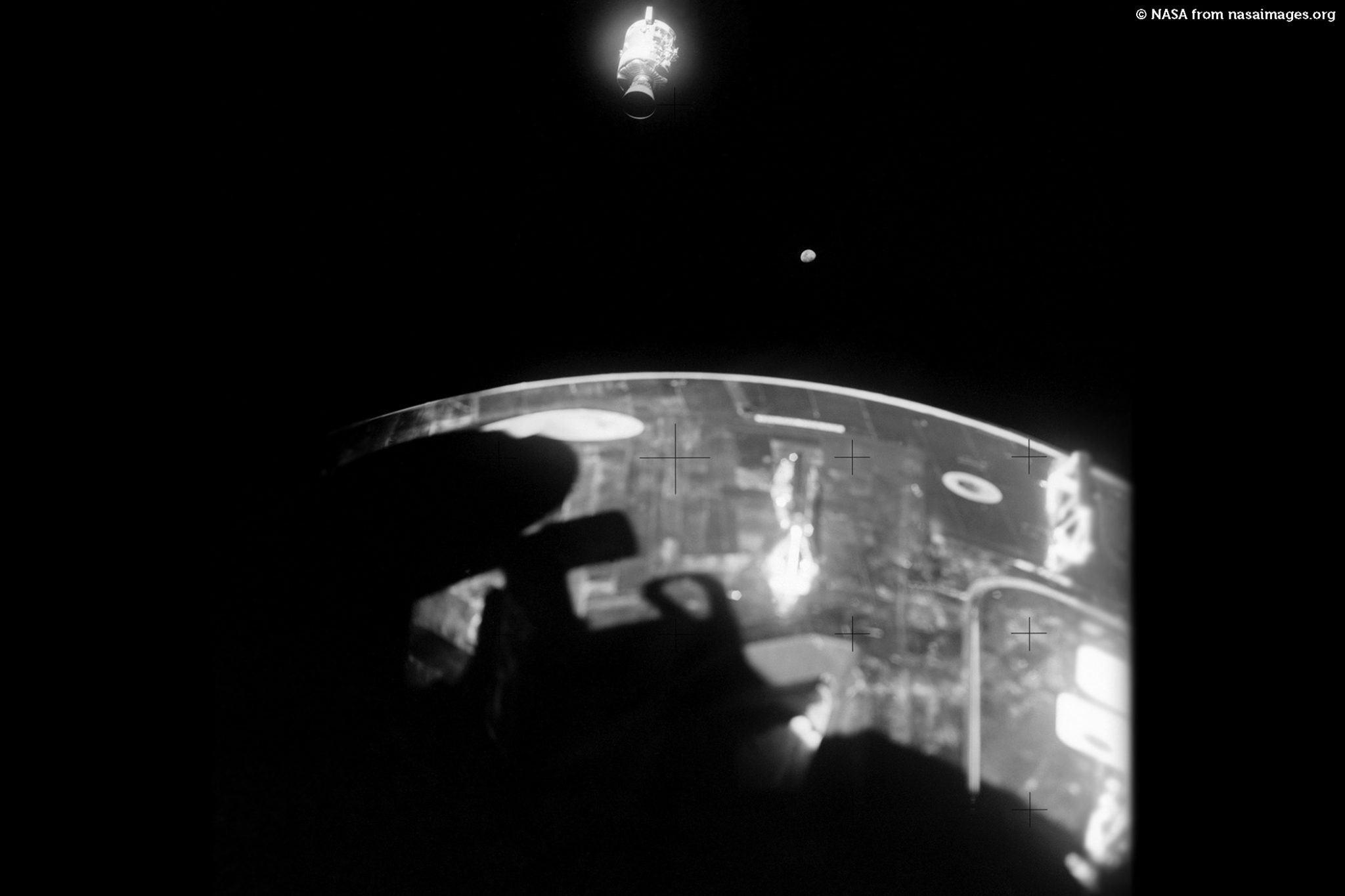
View of damaged Apollo 13 Service Module
14 seconds to save the crew
The crew were instructed to move into the Lunar Module. It could hold them for a limited amount of time, until they could re-enter Earth’s atmosphere. Herein lay the problem; the spacecraft had drifted over 60 nautical miles from where it should have been. If it reentered at that angle, it would be deflected back into space. The only way to put it back on course was to burn precisely 14 seconds of fuel.

It was here that the OMEGA Speedmaster Professional chronograph saved the day. Swigert’s chronograph perfectly timed the burning of the fuel, while Mission Commander Jim Lovell steered the craft to safety. Meanwhile, the Lunar Module pilot Fred W. Haise ensured the Lunar Module did not drift off. On April 17th, 142 hours and 54 minutes after launch, the trio landed safely into the South Pacific Ocean. Lovell optimistically described the ordeal as ‘successful failure’.
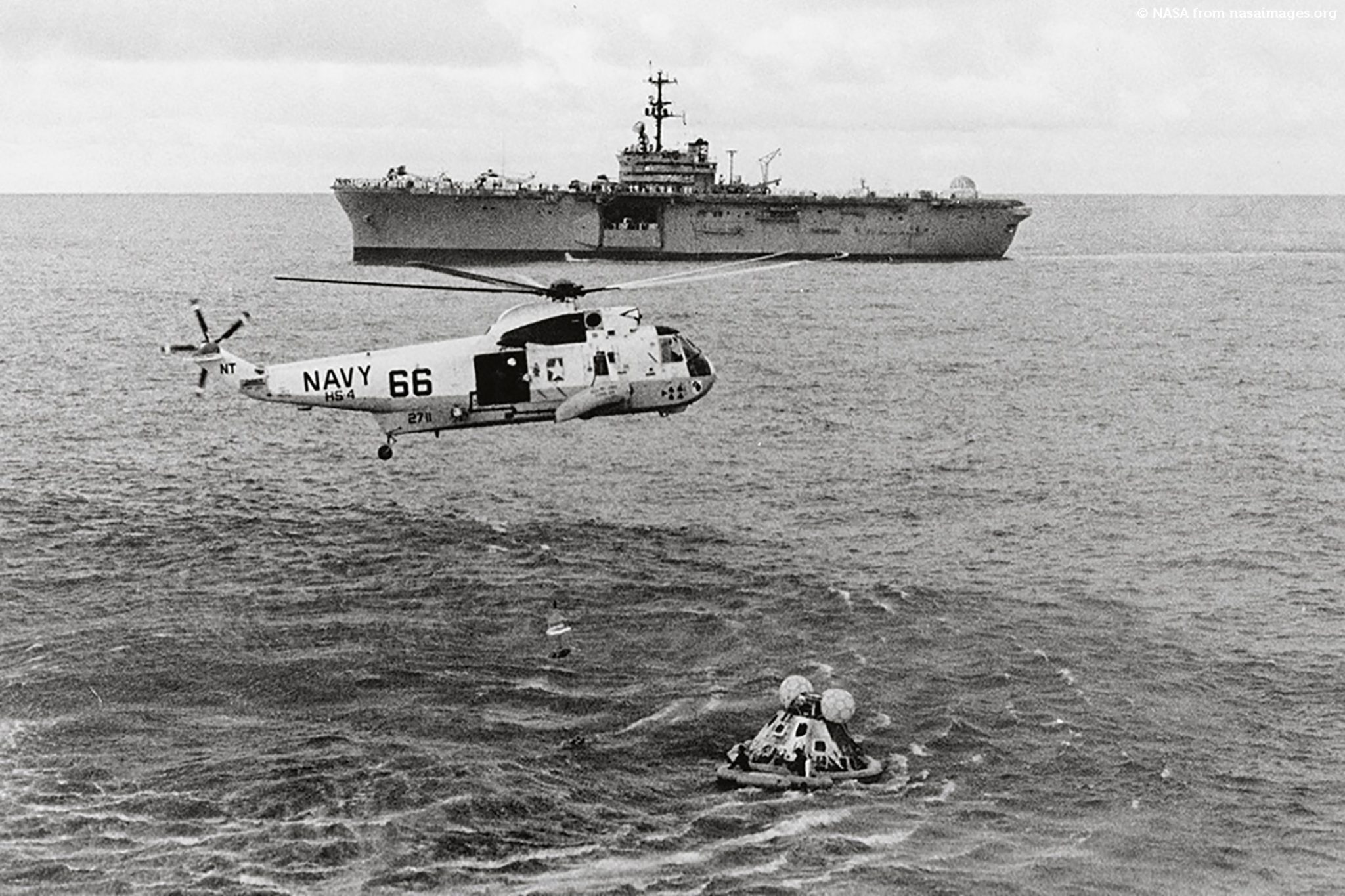
Apollo 13 crew recovery after splashdown
OMEGA Speedmaster Professional chronograph
So, what was the watch that saved them? It was an OMEGA Speedmaster Professional chronograph. The Speedmaster was first introduced in 1957. The first-gen Speedmaster was marketed as a ‘high-precision wrist computer’ to be utilised by the likes of car enthusiasts and athletes. The manual-winding watch, introduced in 1965 (in the form of Ref. ST 105.012), was dubbed the ‘Moonwatch’ following Neil Armstrong and Buzz Aldrin’s legendary journey to the Moon in 1969. Last year, OMEGA produced two new editions to mark 50 years since the first watch on the Moon.
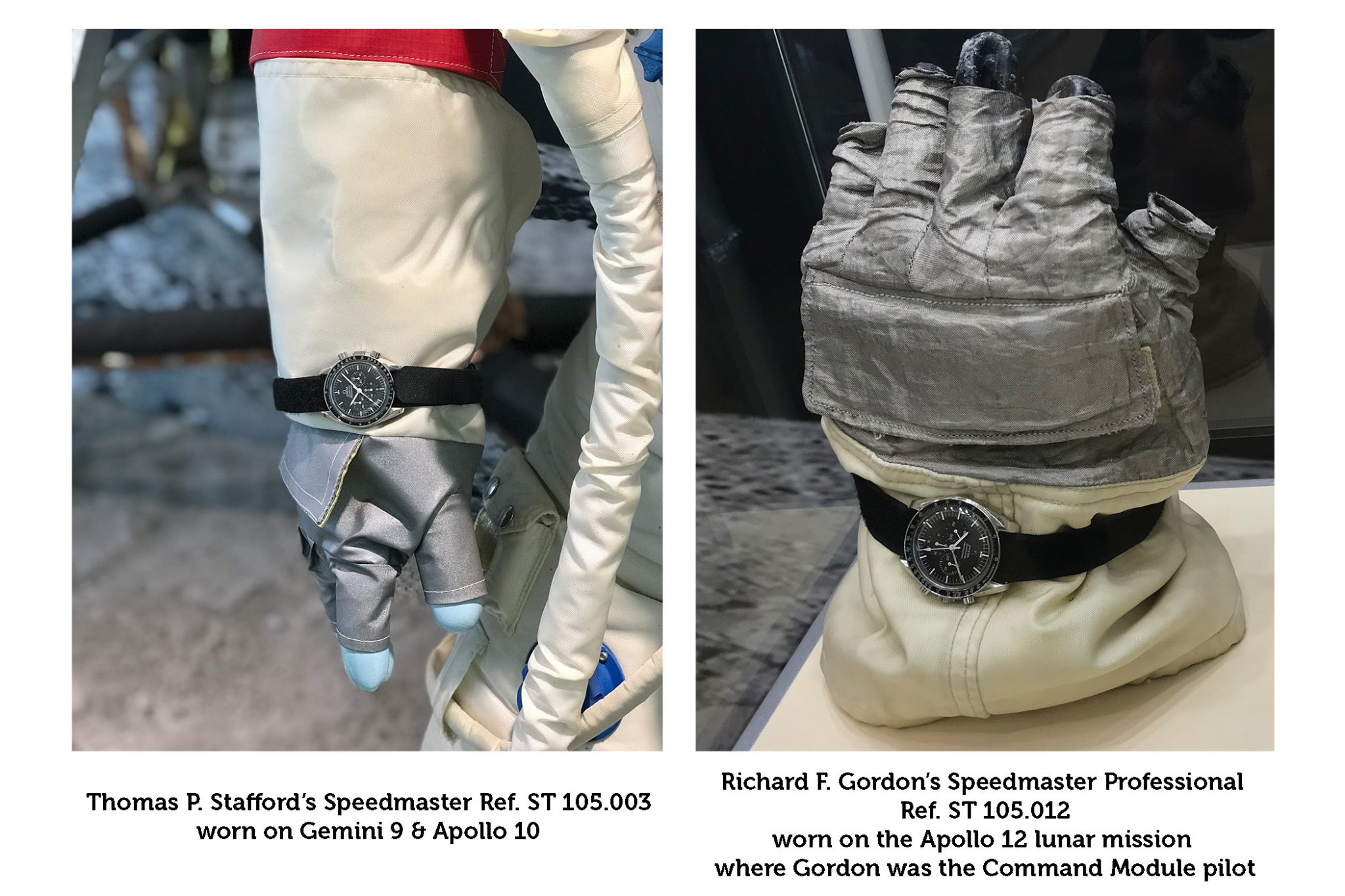
OMEGA itself isn’t certain of the exact references worn on the mission, but it believes that the crew most likely wore the Ref. 145.012. The stainless-steel, 42 mm watch was anti-magnetic and could withstand the extreme temperatures of space. It was also the last Speedmaster to be powered by the legendary calibre 321, a manual-winding column-wheel chronograph. The black dial contrasted with straight luminous hands and a tear-drop central chronograph counter. The timepiece was presented on the now-discontinued OMEGA Ref. 1039 bracelet.
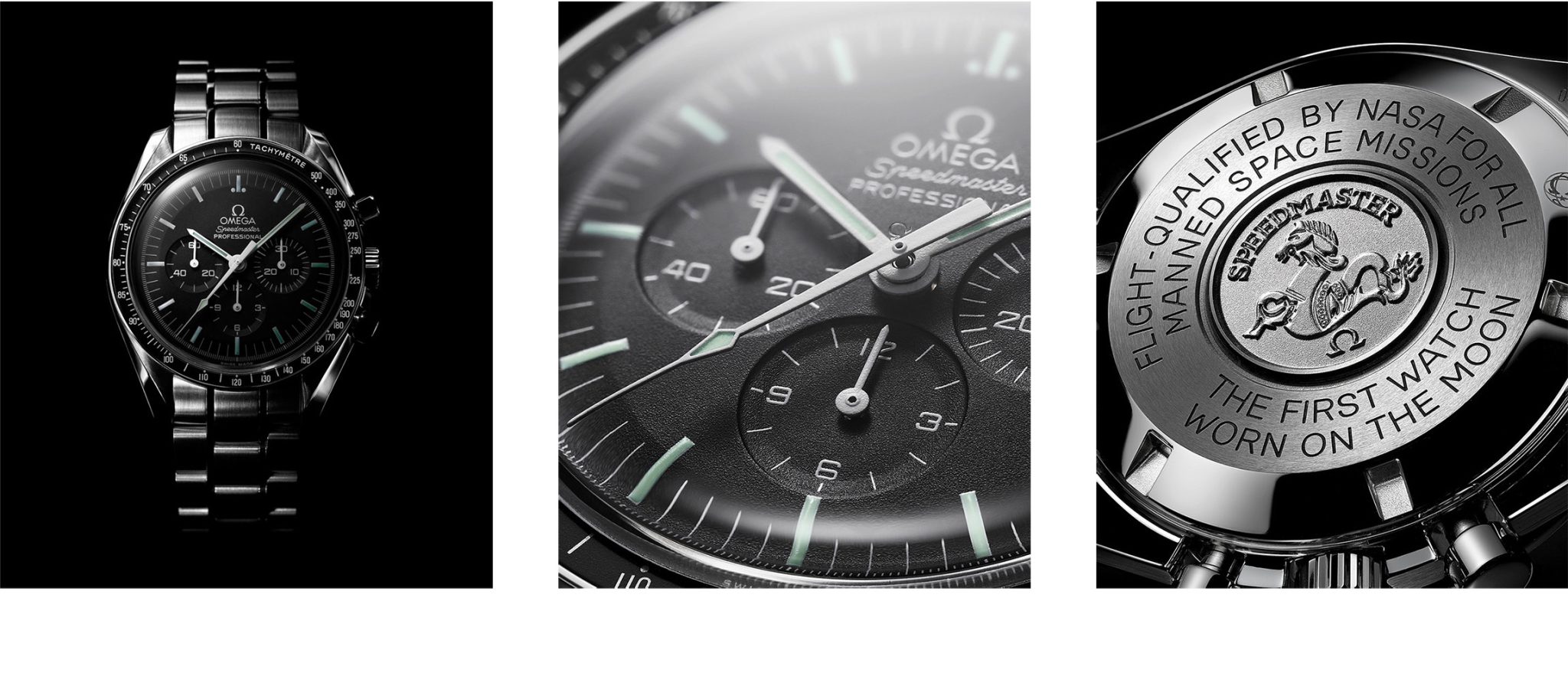
The current OMEGA Speedmaster Moonwatch Ref. 311.30.42.30.01.006 (2017)
OMEGA Speedmaster Apollo 13 Silver Snoopy Award
The same year as Apollo 13’s miraculous ‘successful failure’, NASA rewarded OMEGA its ‘Silver Snoopy Award’ in recognition of the brand’s ‘dedication, professionalism, and outstanding contributions in support of the first United States Manned Lunar Landing Project’. The ‘Silver Snoopy Award’ may indeed be a weird name for an award. It stems back to Snoopy’s surprising role as the organisation’s unofficial mascot, acting as a ‘watchdog’ (a double pun for us) and providing positivity.
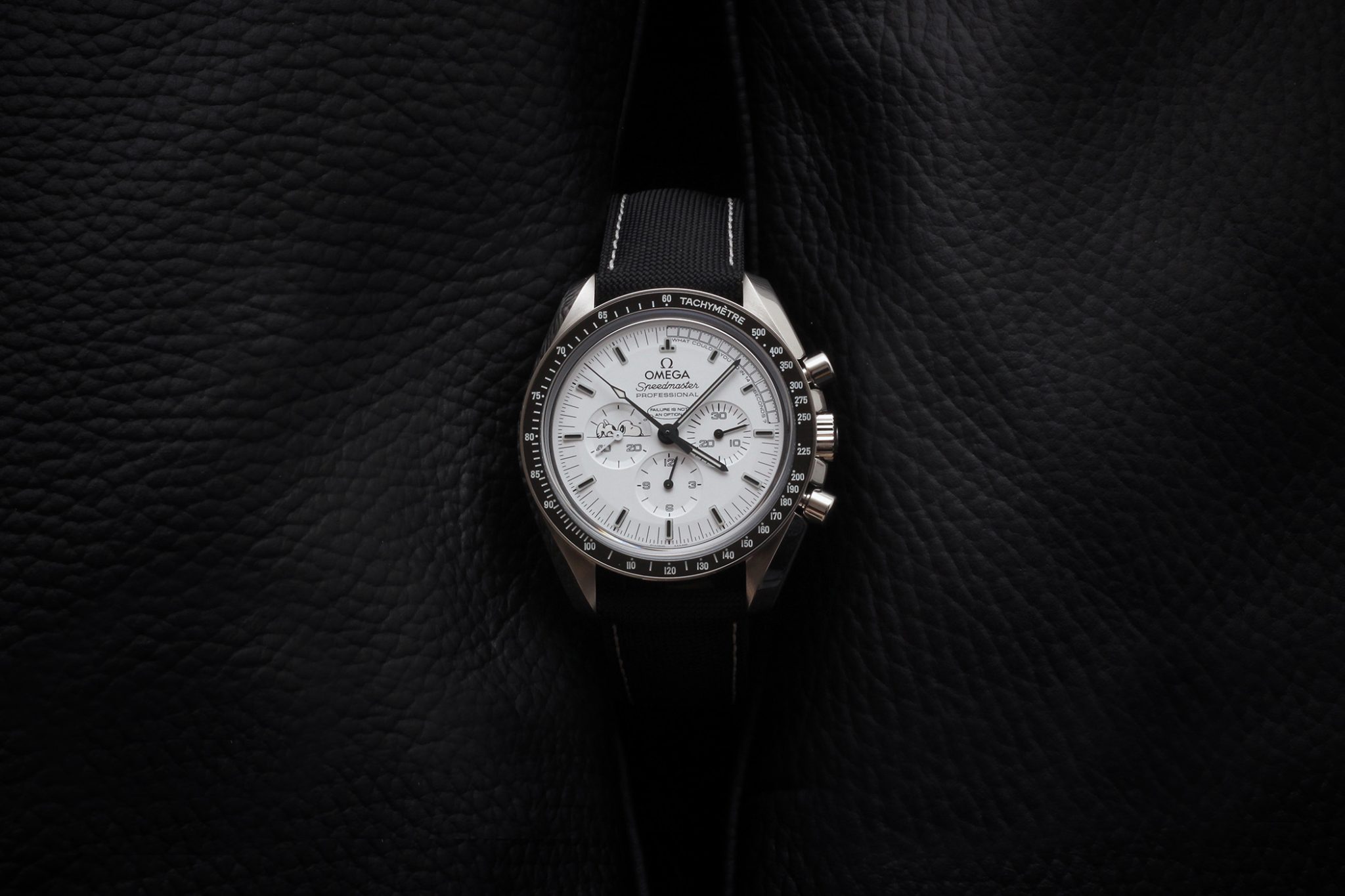
OMEGA Speedmaster Apollo 13 45th Anniversary Silver Snoopy Award Limited Edition
45 years on, a Moonwatch model was created in celebration of the award: the Speedmaster Apollo 13 Silver Snoopy Award. The undeniably unusual edition has several notable features. Its caseback, for example, features a silver medallion with a smiling Snoopy in astronaut attire. Snoopy is surrounded by space-like dark blue enamel, sprinkled with a silver powder.
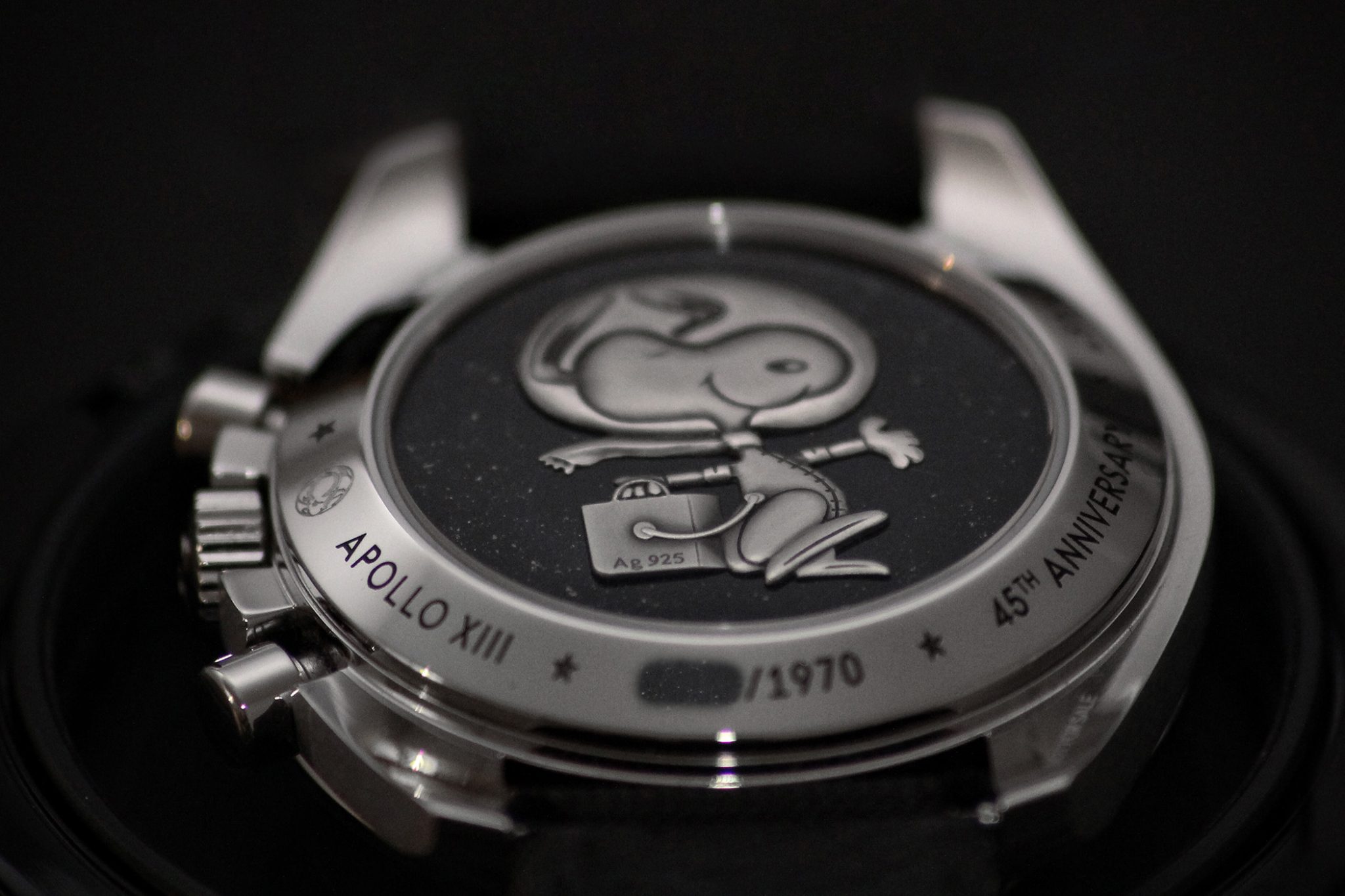
On the caseback: a silver medallion with a smiling Snoopy in astronaut attire
Meanwhile, the white dial’s inverted indexes are lined with green Super-LumiNova, and the black hands are filled with the same luminous material. Snoopy makes an appearance on the sub-dial at 9 o’clock. The upper central part of the dial reads ‘FAILURE IS NOT AN OPTION!’.
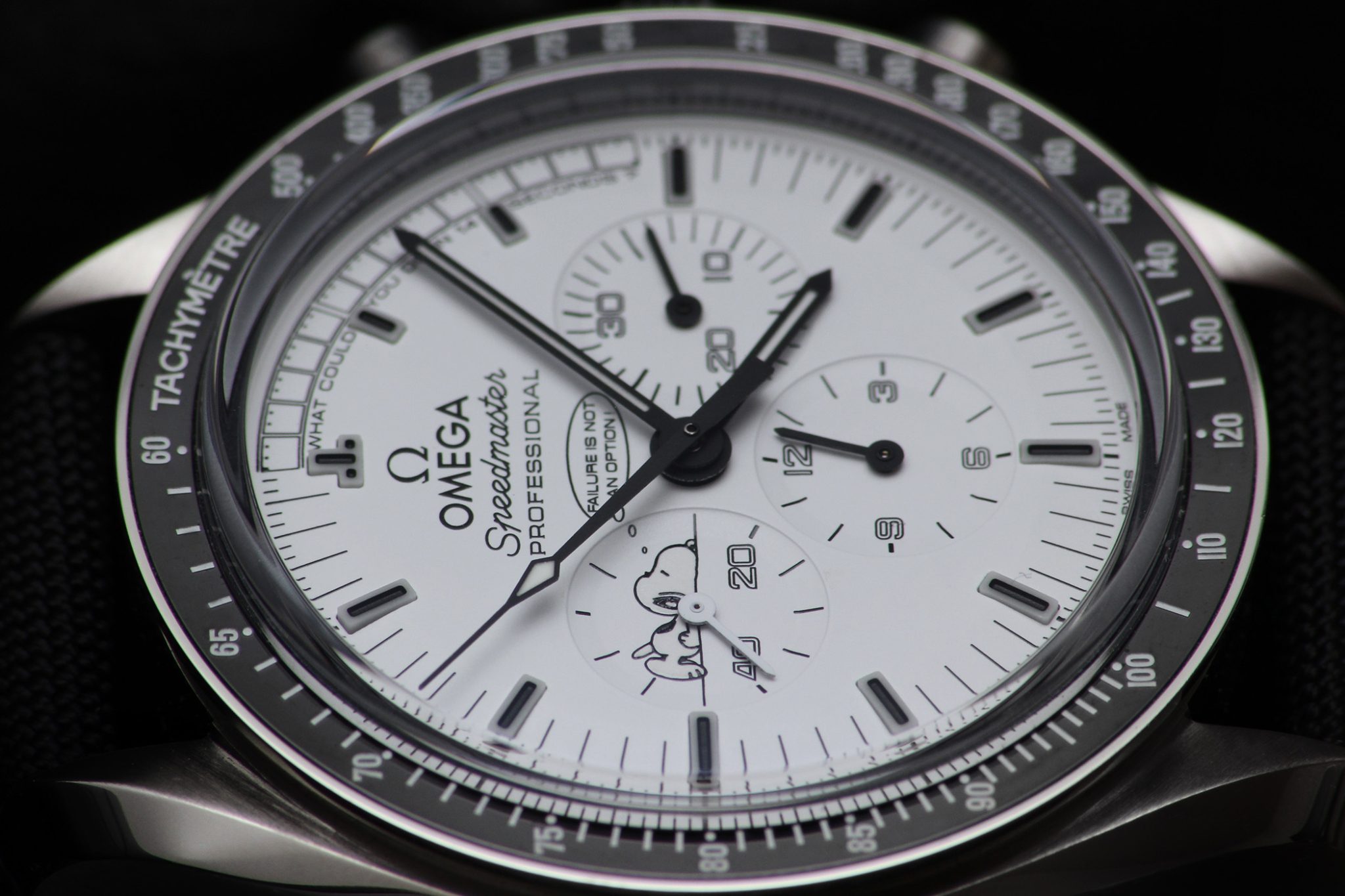
On the dial: ‘FAILURE IS NOT AN OPTION!’
The 42 mm stainless-steel case houses a descendant of the calibre 321, the calibre 1861. The manual-winding chronograph movement has a 48-hour power reserve. However, the most meaningful feature has to be the inscription between zero and fourteen seconds. It reads: ‘WHAT COULD YOU DO IN 14 SECONDS?’.
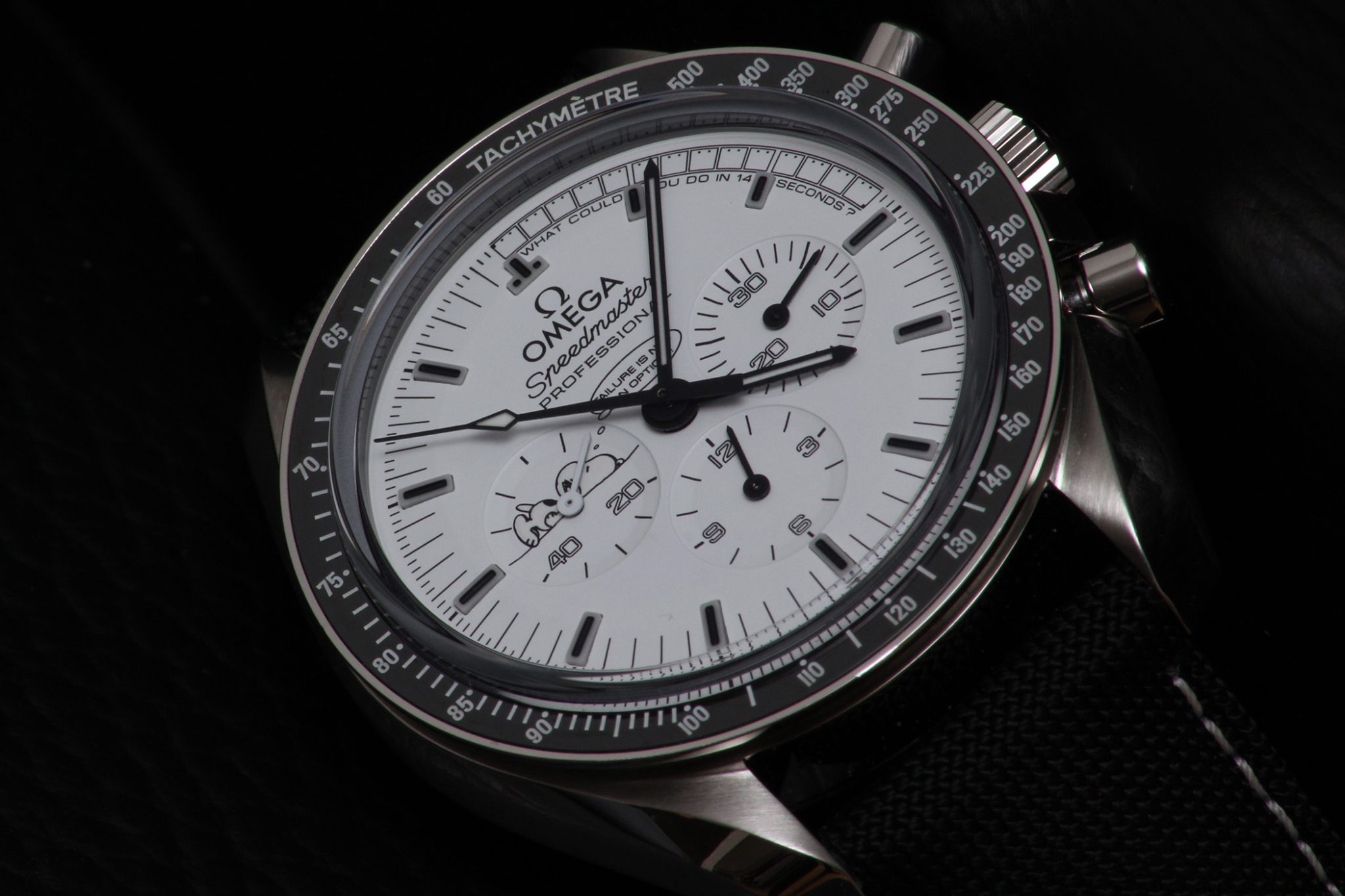
The inscription between zero and fourteen seconds: ‘WHAT COULD YOU DO IN 14 SECONDS?’


